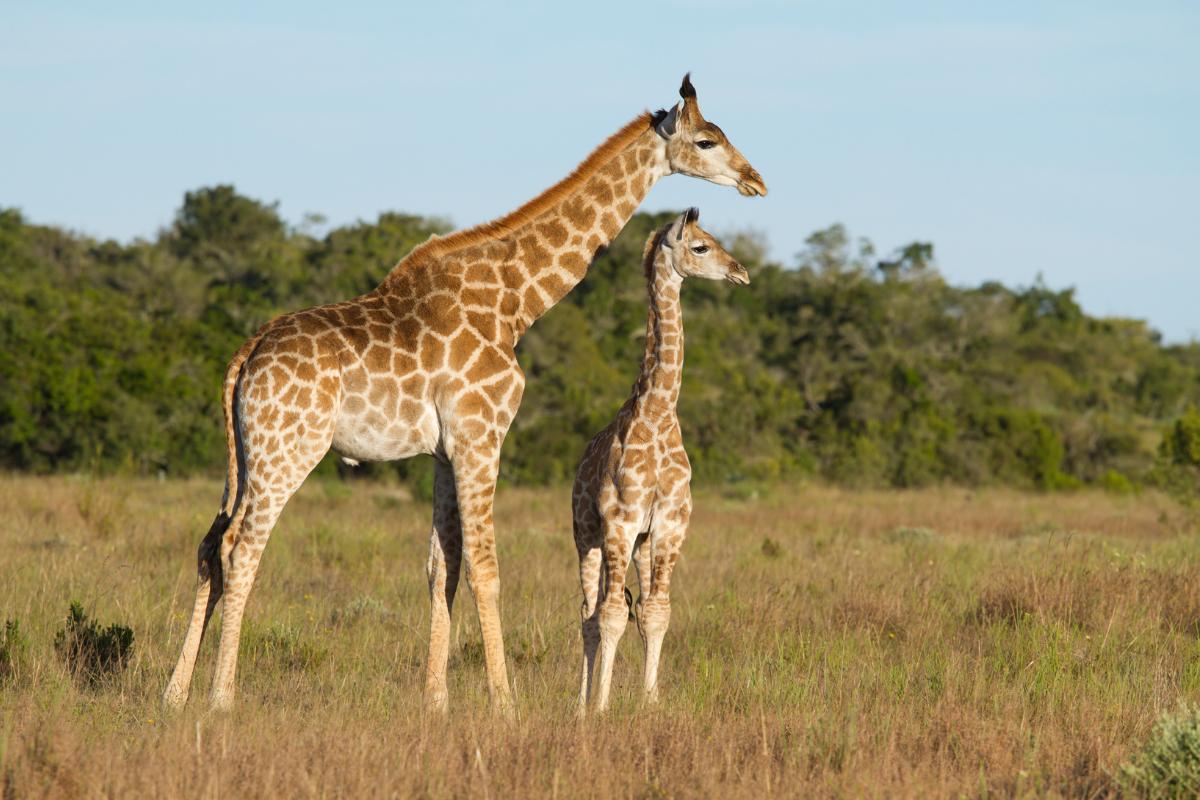How Do Giraffes Sleep?


Imagine being the tallest land mammal on Earth. You have a long neck that allows you to reach leaves high up in trees, but it also makes you a target for predators. How do you stay safe while you sleep? Giraffes have evolved a unique sleeping habit to help them survive.
In this article, we will explore how giraffes sleep and why, as well as some other fascinating facts about these animals.
How giraffes sleep
Giraffes are one of the few mammals that can sleep standing up. They do this by locking their knees and engaging a special tendon that helps to support their weight called the stay apparatus.
This tendon runs down the back of the giraffe's leg and connects to the heel bone. When the giraffe locks its knees, the stay apparatus tightens and prevents the legs from straightening. This allows the giraffe to stand up and sleep without having to expend any energy.
The stay apparatus is a unique adaptation that is found only in giraffes. It is thought to have evolved as a way for giraffes to conserve energy and stay safe from predators. Giraffes are large animals, and it would be very costly for them to have to stand up and sit down repeatedly. By locking their knees, giraffes can stay standing for long periods of time without getting tired.
Giraffes sleep lighter on their feet than when they are lying down. This is because they need to be able to stand up quickly if they are threatened.
However, giraffes also need to lie down to rest their muscles and get into a deeper sleep. They then kneel down and fold their legs under their body, resting their long neck on their rump or thigh.
Giraffes typically opt for secure and concealed locations to rest, often nestled within thickets of trees or bushes. Additionally, they may choose to rest in groups, a behavior referred to as "collective vigilance," which enhances their safety. Interestingly, giraffes are more inclined to lie down while sleeping in a protected setting, such as in captivity at a zoo.
Giraffes rest usually occurs during the hottest moments of the day, where a shorter duration of searching for food and a greater time spent resting and lying down is observed.
Giraffes, like all mammals, have two main stages of sleep: slow wave sleep (NREM) and rapid eye movement (REM) sleep. However, it has been observed that giraffes rarely enter the REM stage, which is associated with dreams and intense brain activity. Instead, they spend most of their time in the NREM stage, allowing them to rest and physically recover.

How much does a giraffe sleep?
Despite being the tallest mammals on Earth, giraffes surprisingly don't sleep for long. On average, they spend around 4.6 hours a day sleeping, which is a very short period for an animal their size.
Additionally, they spread their sleep time into short intervals, usually 5 to 15 minutes at a time. This behavior keeps them alert against possible predators, since their size makes them valuable prey.
Giraffe calves sleep more than adult giraffes, up to 12 hours per day. Giraffes sometimes sleep in groups for increased safety. This is known as collective vigilance.
It should be noted that research on giraffe sleep in their natural habitat is limited, and most of the available studies come from giraffes raised in captivity.
Fun fact about giraffes
Now that you know how giraffes sleep, let's take a look at some other fascinating facts about these mammals:
- Giraffes are the tallest mammals on Earth, with males growing up to 5.5 meters (18 feet) tall and females growing up to 4.9 meters (16 feet) tall.
- Giraffes have seven neck vertebrae, the same number as humans, but their neck vertebrae are much larger and more elongated. Each neck vertebra is about 25 centimeters (10 inches) long.
- Giraffes have a tongue that is up to 50 centimeters (20 inches) long.
- Giraffes have a unique spot pattern that is like a fingerprint. No two giraffes have the same spot pattern.
- Giraffes can run up to 56 kilometers per hour (35 miles per hour).
- Giraffes have a four-chambered stomach, just like cows and sheep.
- Giraffes are ruminant animals, meaning that they chew their cud.
- Giraffes are social animals and live in herds of up to 50 individuals.
- Giraffes are herbivores and eat a variety of plants, including leaves, fruits, and flowers.
Have you ever wondered what even-toed ungulates are? Learn more about these amazing creatures in this informative article.

Other animals that sleep standing up
Did you know that there are many other animals that sleep standing up? Some of these include:
- Horses (Equus ferus caballus)
- Zebras (Equus zebra)
- Elephants (Loxodonta africana and Elephas maximus)
- Cows (Bos taurus)
- Bison (Bison bison)
- Hippos (Hippopotamus amphibius)
- Camels (Camelus dromedarius and Camelus bactrianus)
- Llamas (Lama glama)
- Alpacas (Vicugna pacos)
- Flamingos (Phoenicopteridae)
- Roosters (Gallus gallus domesticus)
- Herons (Ardeidae)
Why do some animals sleep standing up?
It depends on their species and environment, but most animals that sleep standing up do so to stay alert for predators and conserve energy.
Prey animals need to be able to run away quickly if they are threatened. By sleeping standing up, they can be ready to run at any moment. It also takes a lot of energy to stand up and lie down, so sleeping standing up helps animals save energy for other activities.
You might be interested in this other article, which discusses the unique adaptations that allow whales to sleep safely underwater.
If you want to read similar articles to How Do Giraffes Sleep?, we recommend you visit our Facts about animals category.
Pardave Saco, RP (2020). “Evaluation of food consumption and behavior of the only specimens of Giraffa camelopardalis in captivity in Peru during the winter.”







